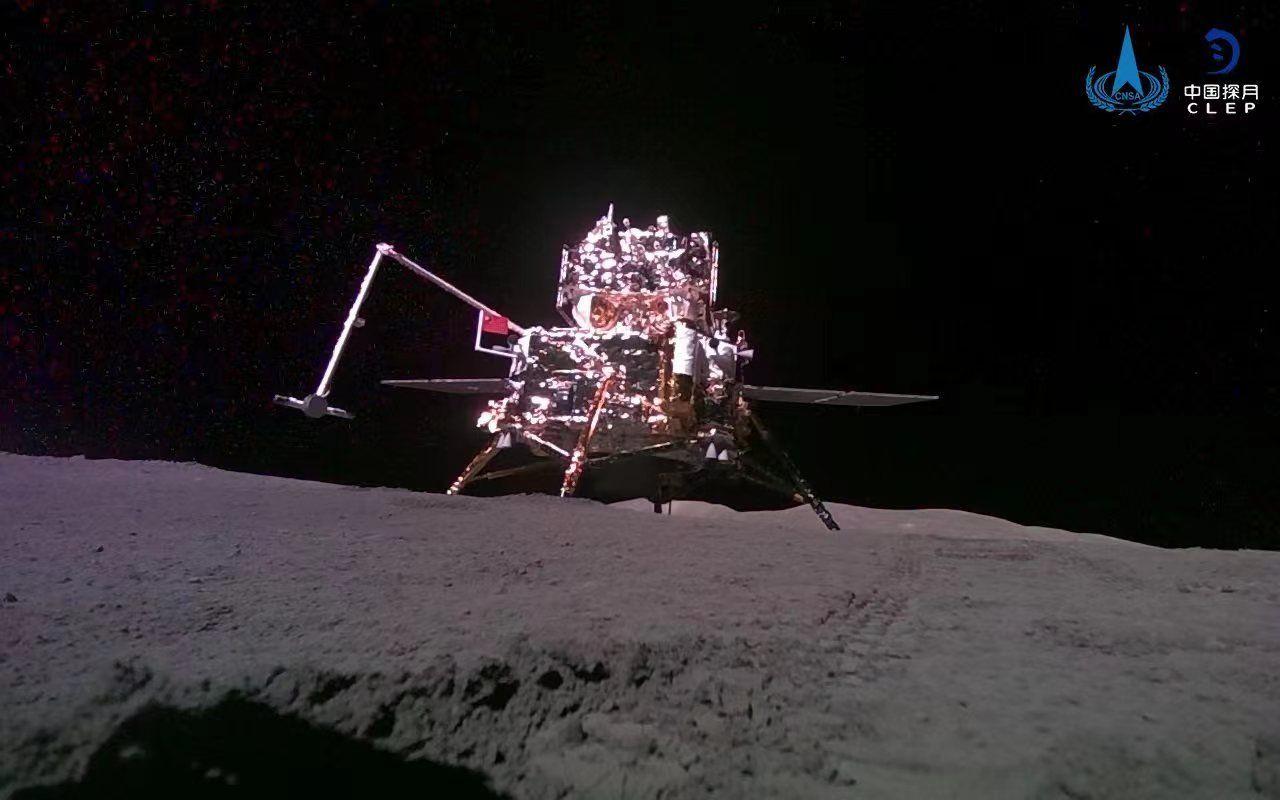China’s lunar probe returned to Earth with the first samples of the unexplored far side of the Moon.
Chang’e-6 landed in the Inner Mongolia desert on Tuesday, after a nearly two-month mission fraught with risks.
Scientists are eagerly awaiting Chang’e-6, as the samples could answer key questions about how planets form.
China is the only country to have landed on the far side of the Moon, having done so before in 2019.
The far side, which is far from Earth, is technically difficult to reach due to its distance and difficult terrain of giant craters and few flat surfaces.
Scientists are interested in this less explored side as it is thought to contain traces of ice, which can be harvested for water, oxygen and hydrogen.
Chang’e-6 lifted off from a space center in early May and successfully landed in a crater near the Moon’s south pole a few weeks later. Their mission lasted 53 days.
The probe will be sent to Beijing and samples will be collected there, according to state broadcaster CCTV.
This is China’s sixth mission to the Moon and the second to the far side. The probe is named after the lunar goddess Chang’e in Chinese mythology.
The probe used a drill and a robotic arm to scoop up dirt and rocks, took some photos of the surface, and planted a Chinese flag.
The United States, China and the former Soviet Union have collected samples from the near side of the Moon, but China is the first to bring back material from the far side.
The goal was to collect up to 2kg of moon rock and soil.
China previously collaborated with international scientists to study samples it brought back from the near side of the Moon, but it is unclear whether similar access will be granted to new material from the far side.
The samples
The latest samples could help answer some questions about the early history of the solar system.
For example, the Aitken basin – one of the largest impact structures in the solar system – formed 4.26 billion years ago, a few hundred million years after most of the lunar craters, which were destroyed by asteroids and comets during a violent period known as the Late Heavy Bombardment.
“Did the basin form as part of the last heavy bombardment? Or was it a separate event? By obtaining precise dates for the basin and the craters that cover it, we will be able to better understand the history of the moon,” the Planetary Society explains on its website in a description of the Chang’e 6 mission.
“This also has implications for understanding the origins of life on Earth,” the Planetary Society added.
“It is possible that asteroids transported water and organic materials to Earth during the last intense bombardment. Understanding the timing and circumstances of this event is essential to unraveling the story of our origin.”
Catherine Heymans, an astronomer at the Royal Households of the United Kingdom, told the BBC: “It is incredibly exciting to see this successful landing.”
“Geological activity on the Moon is very different on the visible side and on the hidden side and the question of why we see these differences has been a great enigma.”
Heymans hopes the recovered samples will help researchers understand the composition of the Moon’s center.
“Is it very similar to Earth? “Can that confirm our theory that the Earth and the Moon were once the same thing?” asks the astronomer.

Chinese pride
The Chang’e-6 mission is a source of pride for a nation that has stepped up its missions to the moon, attracting the attention of its rival, the United States.
State media showed officials triumphantly placing the Chinese flag just after the Chang’e-6 capsule landed in the Inner Mongolia desert.
Chinese President Xi Jinping called to congratulate those in the command center of the Chang’e-6 mission.
Xi told them he hoped they could continue exploring deep space to “reach new heights in unraveling the mysteries of the universe… to benefit humanity and advance the nation.”
Beijing has invested enormous resources in its space program over the past decade, in an effort to catch up with both the United States and Russia.
It aims to send a crewed mission to the Moon by 2030 and plans to eventually build a base at the lunar south pole.
The United States also plans to send astronauts to the Moon again by 2026 with its Artemis 3 mission.
Analysts believe the next space race will not just be about landing people on the Moon, but about who can claim and control lunar resources.
Keep reading:
* The incredible effect of the Moon on the length of Earth’s days
* The mysteries of the dark side of the Moon: What makes it unique?
* NASA photographed a strange object flying over the Moon and generated debate on social networks

Click here to read more stories from BBC News World.
And remember that you can receive notifications. Download the latest version of our app and activate them so you don’t miss our best content.
- Do you already know our YouTube channel? Subscribe!
- What is special about the far side of the Moon and how it differs from the visible side
- Why it took so long to explore the far side of the Moon (and why it is essential to do so)
